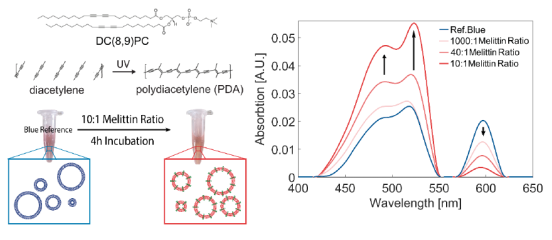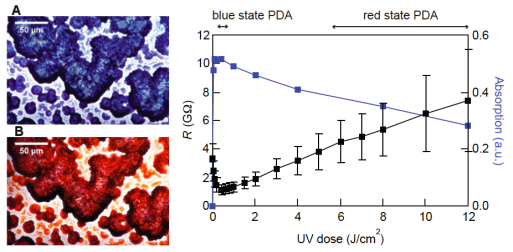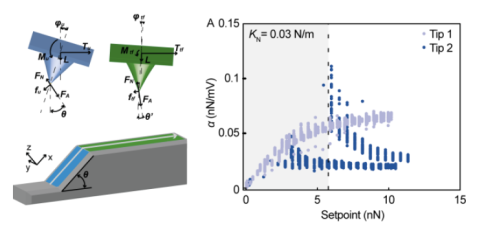Mechanical properties of cell membranes

R. D. Ortuso, U. Cataldi and K. Sugihara, Soft Matter 13, 1728 (2017) DOI
Polydiacetylene (PDA) is a mechanosensitive polymer that changes its color and fluorescence intensity by mechanical stimulation. Our ultimate goal is to use this as force sensor to detect biological forces. We have demonstrated colorimetric and fluorescence detection of a peptide, melittin, based on polydiacetylene (PDA) made of 1,2-bis(10,12-tricosadiynoyl)-sn-glycero-3-phosphocholine (DC(8,9)PC). The PDA used in this work has a phosphocholine headgroup, which mimics peptide-cell membrane interactions better than the conventional PDAs with carboxyl headgroups.
 C. Girard-Reydet, R. D. Ortuso, M. Tsemperouli, K. Sugihara, J. Phys. Chem. B 120, 3511-3515 (2016) DOI
C. Girard-Reydet, R. D. Ortuso, M. Tsemperouli, K. Sugihara, J. Phys. Chem. B 120, 3511-3515 (2016) DOI
Polydiacetylene changes not only its color but the electrical conductivity depending on the stress applied to the polymer.
J Phys Chem C, DOI: 10.1021/acs.jpcc.8b03583 DOI
Friction force microscopy (lateral force microscopy) is one of the main tools we use to study the mechanochromism of PDA. Friction force microscopy is a module of AFM, where it measures lateral forces in addition to vertical forces.


